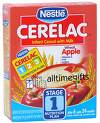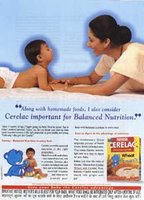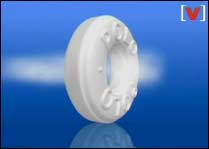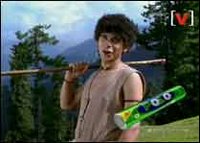Company : Nestle
Brand Count : 255
Nido is Nestle's brand in the milk food segment. The brand is recently making lot of noises in the media. Nido is a milk powder fortified with Calcium and Vitamins. I think that Nido is the updated version of Nestle's Milk for Growing Children.

Nutritious food for children is a growing market worldwide. But this market is left unattractive by lot of regulatory issues. For example , in India, Infant foods ( foods for kids upto age 3) cannot be promoted through any media.
Nido operates in such a market. Nido targets kids above 3 yrs and is positioned as a food for growing children. The USP for Nido is that it is fortified with Calcium and Vitamin D which helps the kids develop strong and healthy bones. The TVC featuring the child and mother is now on air.

Nutritious food for children is a growing market worldwide. But this market is left unattractive by lot of regulatory issues. For example , in India, Infant foods ( foods for kids upto age 3) cannot be promoted through any media.
Nido operates in such a market. Nido targets kids above 3 yrs and is positioned as a food for growing children. The USP for Nido is that it is fortified with Calcium and Vitamin D which helps the kids develop strong and healthy bones. The TVC featuring the child and mother is now on air.
You can watch the ad through the link in the company website : Nestle Nido
Nido faces direct competition with the ordinary milk and milk based beverages.
The brand competes with Junior Horlicks and a host of other nutritional foods available in the Indian market. In terms of promotion and positioning, Junior Horlicks is miles ahead of other brands. But there is a difference between Nido and Horlicks in the sense that Nido is a milk food while Horlicks is a Malt based beverage. So the competition is essentially Industry competition rather than direct brand competition.
Nido is currently using a simple message to convey its positioning.The brand takes the tagline " Nutritious Milk for Growing Kids ". The brand takes the differentiation from other milk brands by having 25 essential nutrients that growing children needs ( comparison with 23 nutrients of Complan) . From the TVC, I think that Nido is addressing competition from both ordinary milk and brands like Horlicks , Bournvita , Complan and the like.
I feel that rather than competing with Horlicks and Complan, the brand will be better accepted if positioned as a substitute for ordinary milk. The ad says Nido is Milk + More.. That is the message that can take the brand forward.
Nido is currently using a simple message to convey its positioning.The brand takes the tagline " Nutritious Milk for Growing Kids ". The brand takes the differentiation from other milk brands by having 25 essential nutrients that growing children needs ( comparison with 23 nutrients of Complan) . From the TVC, I think that Nido is addressing competition from both ordinary milk and brands like Horlicks , Bournvita , Complan and the like.
I feel that rather than competing with Horlicks and Complan, the brand will be better accepted if positioned as a substitute for ordinary milk. The ad says Nido is Milk + More.. That is the message that can take the brand forward.












